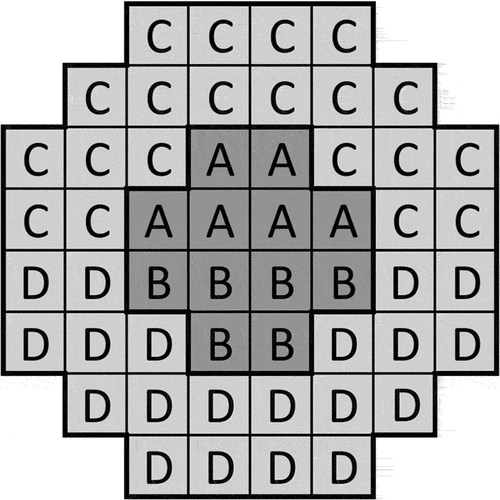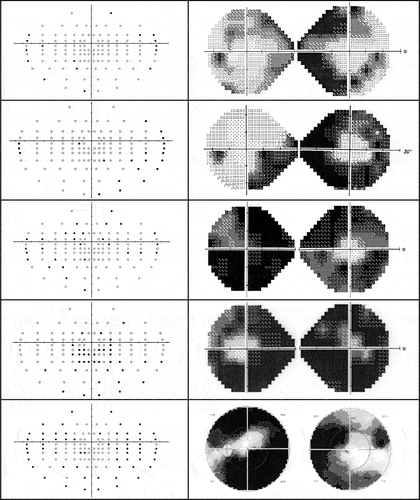Figures & data
Figure 1. Test point clusters in a 20° integrated visual field. Boxes marked (A) show the superior test points located within the central 10°. Boxes marked (B) show the inferior test points located within the central 10°. Boxes marked (C) show the superior test points located between 10° and 20°. Boxes marked (D) show the inferior test points located between 10° and 20°.

Table 1. Driving simulator data for male controls and patients with optic disc drusen.
Table 2. Results and mean age for 334 participants with visual field loss for different reasons that undertook a simulated driving test at the Swedish National Road and Transport Research Institute, Linköping, during 2016–2018.
Table 3. Comparison of mean sensitivity in different clusters of the integrated visual field for male participants with glaucoma who failed the simulator test and participants with optic disc drusen who passed the test.

